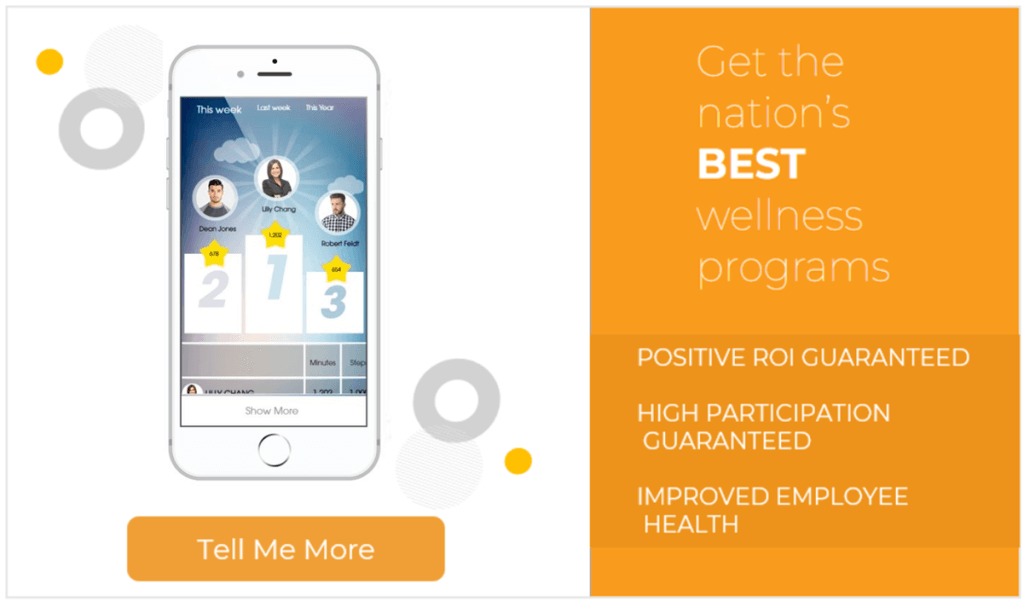
1. What is mindfulness?
Mindfulness is defined as simply being purposeful and present in your head and workspace. It can be described as an inward and outward awareness of yourself, others and your surroundings. Mindfulness is about being intentional. When you practice mindfulness at home or mindfulness in the workplace, you’ll be a better version of you.
“Mindfulness is the ability to know what’s happening in your head at any given moment without getting carried away by it.”
– Dan Harris
People who try to multi-task are less effective when they focus on two or more tasks than they would be if they focused on one thing until it was done. This is where “mindfulness” comes in.
People who have been trained in “mindfulness” say that they become more aware of how their own mind works. They see how their own filters impact perceptions and therefore the decisions they make.
This video will give you a fun overview of mindfulness.
What Does This All Mean?
When people learn to keep these filters in check, they are more willing to listen and learn from others. They become more aware of their own preconceived notions and become receptive to a greater set of possibilities that they had not considered before.
All of this from mindfulness – really? Mindful people have learned to focus on one task at a time. In that sense, mindfulness goes way beyond “thinking outside the box” to not even having a box to begin with. Mindful people seek the best solution to whatever problem they might have.
Those who are mindful have a greater awareness of how they connect to others, to the community, and to the future generations. The Iroquois indigenous people had a rule about making decisions: any decision should consider how it may impact the next seven generations.
It would be great if we could just get beyond thinking about “my needs now!” So you can see how mindfulness in the workplace could benefit the continuity within your group.
RELATED: How to Improve Mental Health in the Workplace
2. How do you practice mindfulness in the workplace?
Most people who practice mindfulness do it by starting any meditative process. They usually start with deep breathing which tends to relax every part of your body and mind. Then, they focus on one thing. Just one. It can be a blue lion as illustrated in this video, or an orange, or anything really.
The key is to practice focusing on just one thing. You shouldn’t worry if your mind is drawn away to other things. In fact, it likely will be. When you become aware that your mind is wandering, just guide it back without judgement and focus on your one thing. There you go! It really is that simple.
When you consistently practice mindfulness, you will see more clearly that you’re connected in hundreds and thousands of ways to everything around you. You’ll be connected to others, to your community, and to the planet.
When you set aside time to practice mindfulness in the workplace, and practice is a must, you will become more capable of focusing on one thing at a time. You’ll have essentially re-patterned your thinking by focusing on the present and by being still. You will be in the process of successfully making a life, not a living!
RELATED: Why Are Happy Employees More Productive in the Workplace?
3. Why is mindfulness in the workplace so important?
Mindfulness in the workplace is becoming more important as we transform from a manufacturing to a knowledge-based economy. In a manufacturing economy, the body was the primary means of production. But in a knowledge economy, it is the brain.
A famous management consultant referred to employees in a knowledge economy as a “capital asset.” The truth is that nobody trains those who manage others how to manage themselves. And nobody learns how to transform the greatest tool in a knowledge economy, the mind itself!
If a manager is unable to focus, that becomes a major problem because every negative emotion influences decision making. Mindfulness in the workplace allows managers to let go of thoughts about the past and future and focus on the present. A manager who masters this ability can hold meetings that take place in the present and let go of previous meetings.
What about the annual performance review? Usually the review process revolves around criticism which would justify an employer from giving an employee a larger pay increase.
The employee would become defensive which would set off the part of the brain that deals with emotions. But what if instead, managers started with one question such as: “How do you think this year went?”

Sure, there would be a learning curve but ultimately by answering this question, the employee’s brain activity would move to the part of the brain that is related to judgment, character and ambition to name a few.
Is It Really Good For Business?
What about multi-tasking? Here’s what the research says. Basically, after reducing time spent on multi-tasking, participants reported that both their productivity and their quality of work significantly increased.
In fact, they were meaningfully connected with colleagues, family, and friends by being able to listen better. But practicing mindfulness in the workplace can have even a greater impact than by simply changing listening. It can transform our connection with a bigger world by channeling our feelings of interdependence.
Practicing mindfulness in the workplace can have even a greater impact than by simply changing listening. It can transform our connection with a bigger world by channeling our feelings of interdependence.
We can all use more interdependent thinking from Wall Street to Main Street. Mindfulness in the workplace can be a change agent that reaches all the way to company vision.
RELATED: 15 Ways to Promote High Job Satisfaction
4. What benefits do employees get when they practice mindfulness?
Hundreds of published studies shows that our brains are malleable and can actually be rewired through a mindfulness practice. Research on the brains of conflict meditators has documented neuron growth in the area of the brain associated with learning, memory and emotional control.
Neuron growth also occurs in the area of the brain responsible for awareness. Functional MRIs have noted other positive brain transformations in as little as eight weeks and with a daily practice of just under 30 minutes.
Here is a huge review of all the research that documents the benefits of mindfulness.
So do employees practice mindfulness in the workplace? Yes they do. There are organized efforts all over the country to lead the mindfulness movement. Many larger firms have helped their employees learn mindfulness in the workplace skills.

Employees at Google have learned to calm themselves when they want and this helps them be more productive at work. Essentially, they learn how to deal with the unknown even before they know there is something they don’t know.
Mindful employees are often able to perceive their own growth particularly when it comes to their relationships with their colleagues.
But can practicing mindfulness in the workplace help deal with difficult managers? If it is true that “you can only control yourself,” then it doesn’t pay to be angry at a boss no matter how difficult!
Difficult managers will always be difficult, but when an employee practices mindfulness, they create an ability to relate to that manager with a much broader perception and with new skills. The employee can respond with more discipline and with the ability to see things more clearly than others.
RELATED: Everything You Need to Know to Increase Employee Productivity
5. What are examples of mindfulness in the workplace?
What about mindfulness for the manager? There is no doubt that managers must learn to manage themselves. And when they do, all sorts of research suggests that they will become more effective as a leader.
If they lead well enough, their companies will become more successful and ultimately lead to career advancements. This will likely be due to the fact that the workers they manage, especially in the knowledge economy, were able to work in a more productive and effective manner.
Consider the manager who thinks about a new venture. The mindfulness trained manager has moved beyond “being effective” to changing the way they see and relate with the world.
They have learned how to manage their nervous system by calming down. They also have a better sense of how to solve problems in a world that does not yet exist.
The non-mindfulness trained manager is more likely to think about how the new venture could fail and therefore reflect on his or her abilities poorly. One mindset creates opportunity and while the other shuts it down.
6. What are some mindfulness exercises?
The secret to any mindfulness based strategy is attention to the present. Basically, you get the brain you mindfully practice.
Here is a video to help you start a few simple mindfulness exercises.
The Mayo Clinic has compiled an easy-to-do list of mindfulness exercises:
Pay attention. It’s hard to slow down and notice things in a busy world. Try to take the time to experience your environment with all of your senses — touch, sound, sight, smell and taste.
Live in the moment. Try to intentionally bring an open, accepting and discerning attention to everything you do. Find joy in simple pleasures.
Accept yourself. Treat yourself the way you would treat a good friend.
Focus on your breathing. When you have negative thoughts, try to sit down, take a deep breath and close your eyes. Focus on your breath as it moves in and out of your body. Sitting and breathing for even just a minute can help.
7. Why wellness programs are the best places to offer mindfulness in the workplace.
In most organizations, a new program needs a permanent home. There is no question that improving the employee’s ability to cope with work stress is clearly the goal of nearly all wellness programs.
The primary application for mindfulness in the workplace is probably health or stress-reduction related. It makes perfect sense the nest any mindfulness initiative in the wellness program.
Almost all cutting-edge wellness programs offer mindfulness in the workplace programming.
RELATED: What is in an Employee Wellness Program? Everything You Need
8. How do you practice being present?
Mindfulness is based on the idea that most people focus their minds in the past or the future the vast majority of the time. They handle the present mostly by operating on auto-pilot.
Mindfulness is just a way of directing attention – paying attention to become more aware of our emotions, beliefs and actions in the present. When you know accurately what is really happening in the present, you are more able to respond correctly.
Here are a few more structured mindfulness exercises you can practice.
Body scan meditation. Lie on your back with your legs extended and arms at your sides, palms facing up. Focus your attention slowly and deliberately on each part of your body, in order, from toe to head or head to toe. Be aware of any sensations, emotions or thoughts associated with each part of your body.
Sitting meditation. Sit comfortably with your back straight, feet flat on the floor and hands in your lap. Breathing through your nose, focus on your breath moving in and out of your body.
If physical sensations or thoughts interrupt your meditation, note the experience and then return your focus to your breath.
Walking meditation. Find a quiet place 10 to 20 feet in length, and begin to walk slowly. Focus on the experience of walking, being aware of the sensations of standing and the subtle movements that keep your balance. When you reach the end of your path, turn and continue walking, maintaining awareness of your sensations.
9. How does mindfulness in the workplace help you live in the moment?
To understand why “living in the moment” is necessary is a successful mindfulness practice, consider how conscious actions become non-conscious habits.
In the interest of preserving resources, the brain moves a repeated action from the conscious to the habitual part of the brain. Thus living in the moment pulls whatever activity you happen to be doing from the habitual part of the brain back to the conscious part of the brain.
10. How do you bring mindfulness to the workplace?
Here are three ideas.
First, you can offer or create a mindfulness in the workplace campaign or challenge. If you work with a wellness vendor, ask them whether they have anything that would help teach principles of mindfulness.
WellSteps has two campaigns that teach such principles; one is focused on personal mindfulness and the other is focused on using mindfulness in the workplace.
Our campaigns are web-based and teach the practice of mindfulness by using videos and interaction.
For example, in our mindfulness campaigns, participants learn how to:
- use deep breathing
- practice gratitude
- go for a mindful walk
- connect with meaningfully with others
- practice listening to their language
- being present
- being patient
- being compassionate
Second, you could have a a speaker or lunch and learn about mindfulness.
Third, you can update your wellness incentives point system to give points to employees who complete mindfulness challenges, presentations, or practice mindfulness.
Next Steps For You Supporting Mindfulness in the Workplace
Mindfulness enables people to be more aware of the importance of the present as opposed to the past or the future. Those who practice mindfulness usually start with deep breathing then focus on one thing. This added focus helps people become more productive, creative, patient, and understanding.
Feel free to schedule a live demo with one of our WellSteps guides and discover how mindfulness can compliment a well rounded wellness plan for your organization.

Thank you! Great resource.
Comments are closed.